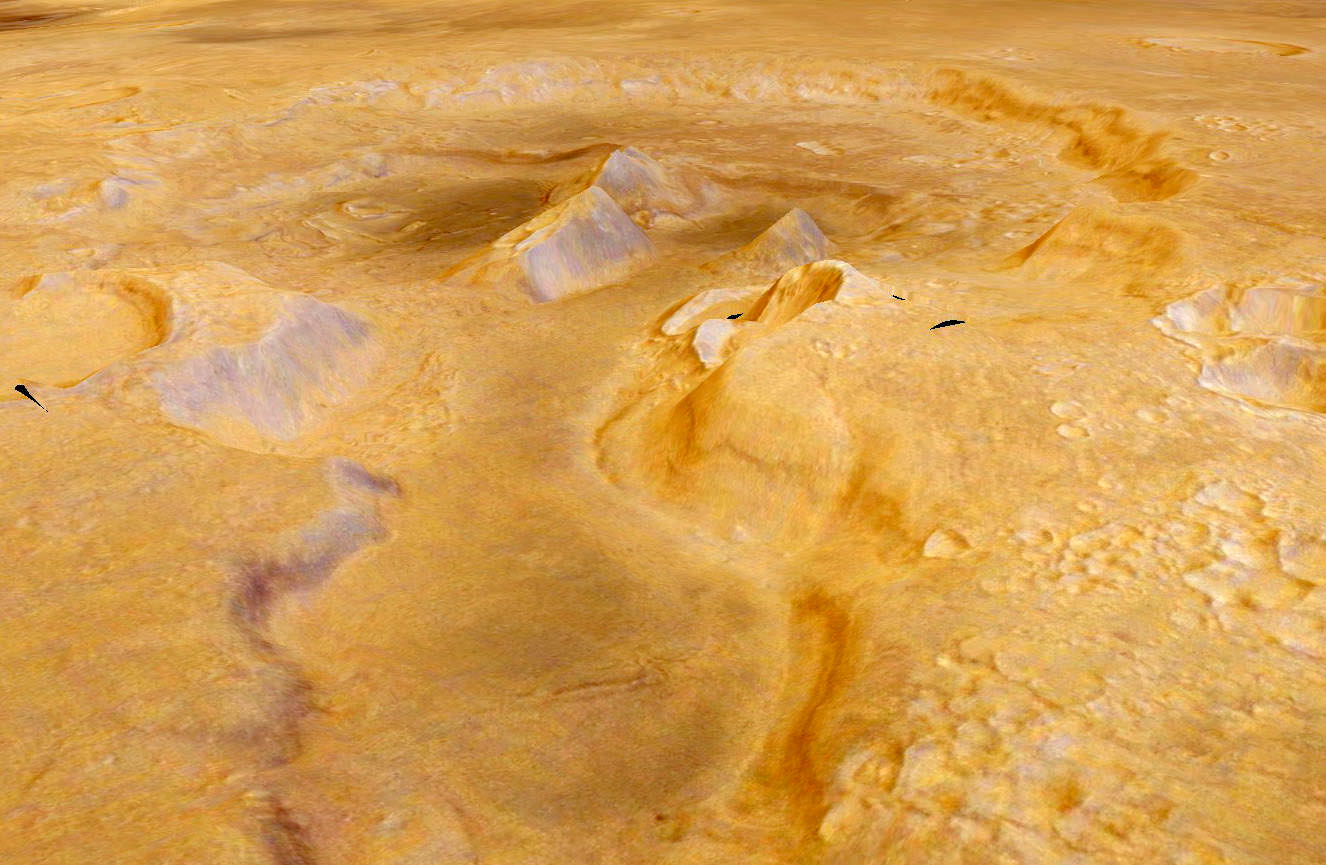Once-active “supervolcanoes” in northern Mars likely spewed ash and dust thousands of miles away, producing powdery deposits noticed by the NASA’s Curiosity and Opportunity rovers closer to the equator, a new study suggests.
The scientists suspect that irregularly shaped craters in Arabia Terra, which is in the northern highlands of Mars, are leftovers of huge volcanoes from eons ago. Until now, those areas weren’t pegged as volcanoes at all.
“Discovering supervolcanic structures fundamentally changes how we view ancient volcanism on Mars,” stated Joseph Michalski, a Mars researcher at the Natural History Museum in London and the Planetary Institute in Tucson, Arizona.
“Many Martian volcanoes are easily recognized from their massive shield-shaped structure, similar to what we see in Hawaii. But these are relatively youthful features on Mars, and we have always wondered where the ancient volcanoes are. It is possible that the most ancient volcanoes were much more explosive and formed structures similar to what we now see in Arabia Terra.”
As some scientists believe that the crust of Mars was thinner than it is now, this would let magma erupt to the surface before it could release gases inside the crust, the team added. The finding also has implications for predicting the ancient atmosphere and looking at habitability.
“If future work shows that supervolcanoes were present more widely on ancient Mars, it would completely change estimates of how the atmosphere formed from volcanic gases, how sediments formed from volcanic ash and how
habitable the surface might have been,” Michalski added.
Be sure to check out the full paper in Nature. Author affiliations include the Planetary Science Institute in Arizona, the London Natural History Museum, and the NASA Goddard Space Flight Center.
Sources: Natural History Museum and Nature

